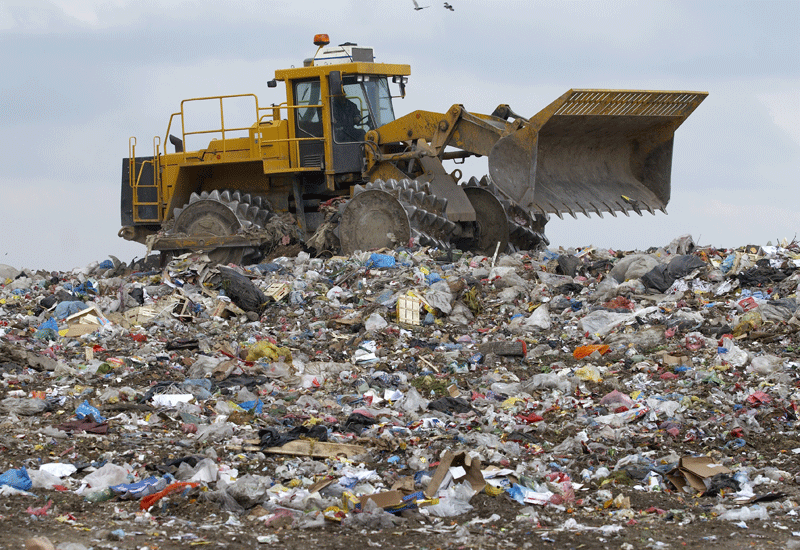Garbage dumps, or landfills, are areas where trash is deposited. In the past, this was done by digging a large pit and dumping trash into it. Most of the time, rubbish is now compacted before being buried. As environmental regulations have become more stringent, a significant number of landfills have been closed or upgraded during the past 30 years.
How are landfills made and kept up?
To put it simply, landfills are where waste is gathered and disposed of. The municipal trash collection services gather waste from our homes and businesses and transport it to landfills. A total of around a thousand landfills are now in operation across the United States of America. Puente Hills Landfill in California is the world’s oldest continuously operating dump.
It first opened its doors in 1957 and is still going strong today. For decades, landfills can be in use, and they might be hundreds of acres large. Clay, plastic, and fibreglass are used to line them in order to keep the chemicals from seeping into the groundwater. In landfills, garbage decomposes and releases gas. Electricity is generated by burning the captured gas.
When landfills are overflowing, they are covered and protected from the elements. Methane can be a huge source in landfills. According to the Environmental Protection Agency (EPA), landfills account for a significant portion of the country’s total methane emissions.
Every year, landfills are projected to produce roughly 500 million metric tons of carbon dioxide equivalents (CO2e). Landfills in the United States are the primary source of methane emissions. Methane combustion has a global warming potential that is 21 times greater than that of carbon dioxide.

Various kinds of landfills
There are a variety of landfills to choose from. Sanitary landfills, non-hazardous waste landfills, and hazardous waste landfills are the most prevalent types of landfills. Plastic membranes line sanitary landfills, which are built to contain household garbage and prevent leakage into the soil or groundwater. To dispose of non-hazardous waste, such as building and demolition debris, landfills are employed. Chemicals and radioactive materials can be safely deposited in a hazardous waste landfill along with other types of solid trash.
Landfills in Illinois
Bond County Landfill
Trash and garbage are buried under layers of earth or other cover materials at the Bond County Landfill in Greenville, Illinois. Both the US Environmental Protection Agency and the Illinois state environmental departments monitor Greenville’s sanitary landfills, dump sites, and garbage dumps.
Illinois is also in charge of issuing permits for landfills. The Bond County Landfill’s design, operation, and permitted waste streams are all determined by the county’s permitting laws.
Lee County Landfill
The Lee County Landfill is a place in Dixon, Illinois, where trash and garbage are buried under layers of soil or other covering materials. Sanitary landfills, dump sites, and garbage dumps in Dixon are governed by both the U.S.
The Environmental Protection Agency and the environmental departments of the state of Illinois. Illinois is also in charge of giving permits for trash dumps. Permitting rules decide how the Lee County Landfill looks, how it works, and what kinds of trash residents can put in it.
The effects of landfills
Worldwide, the issue of landfills is a major one. As a result, we tend to dismiss it as an insignificant issue that we have little control over. However, landfills can have a significant impact on the environment. For example, most landfills are located in the natural environment. As a result, they pose a significant threat to the environment. Animals, trees, and plants may be harmed as a result.
Landfills can also be a source of flooding, as they act as a holding area for rainwater. Methane gas is also produced in landfills. People and animals alike are at risk from inhaling this toxic gas. It’s also possible to solve this issue in a variety of ways. It is possible to reduce the amount of waste sent to landfills, for example, through the use of recycling. Solar energy, for example, can also be used as a source of clean energy.
Conclusion
Today, waste management is a critical area of study and work. Most individuals now dispose of their garbage in landfills thanks to waste management. It is the process of gathering, transferring, classifying, and disposing of rubbish. People, businesses, and even entire countries can all be responsible for disposing of waste.
The health of the planet depends on proper trash disposal. The spread of disease can be prevented if waste is properly disposed of in a community. The state of Illinois uses dumpsters to dispose of garbage. We’re a top-notch business in the state of Illinois. We provide waste management services to businesses and individuals alike. When it comes to providing high-quality services at reasonable costs, our management is well-known in Illinois.
Customers in Illinois who have been with us from the beginning are some of our most devoted supporters. We have a group of professionals working for us that are dedicated to providing the best services possible to our clients. If you’re seeking a trash removal service, contact us.
Get rid of your waste in the right manner with our guidance. We’ll recycle your garbage so that it doesn’t wind up in a landfill. The most efficient way to get rid of your garbage is to hire us. If you hire us, we’ll take care of your waste in no time.